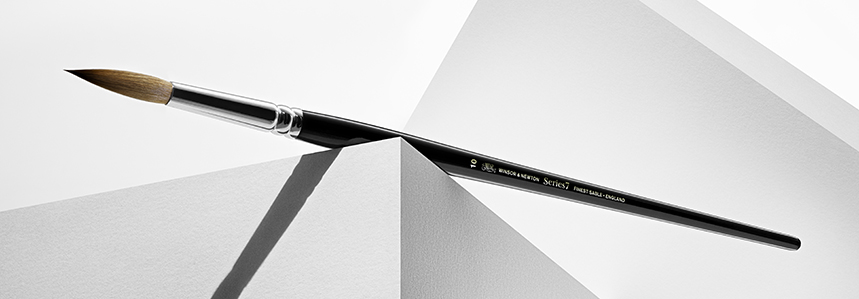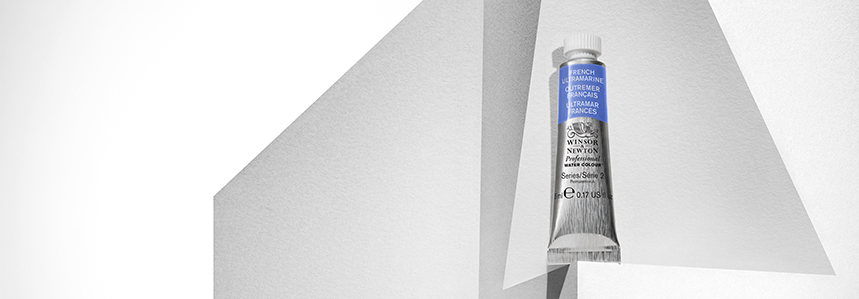The Art of Creating
From manuscripts, miniatures and maps through works demonstrating the expressive visual splendour of foreign lands, abstracts and the avante garde, water colour has always played an important part in British and global art. In fact, some of the most iconic works of art in the world are watercolours. William Blake, JMW Turner, Paul Nash, Emil Nolde, David Hockney, Tracey Emin and Anish Kapoor have all worked in the medium.
How will you use the new Winsor & Newton water colour papers to create your own exceptional works of art?
There are certain traditional techniques that will only look their very best when applied onto the highest quality Winsor & Newton water colour papers. These techniques include:
| Flat or even wash | This is a soft wash across the paper that should be lovely and even. Any flecks, dots, lines or faults in the paper will interrupt the evenness of the wash, making a smooth, perfection-free surface a vital consideration |
| Graded wash | This is a wash with a strong colour at the top that softly descends to soft undertones. For wet in wet, colours should be able to drop, merge and travel across the paper. |
| Dropped water | This technique produces a lovely firework effect, the clarity of which depends on the quality of the paper selected |
| Hard edge | With this technique, the colour will only go as far as the water. Many papers do not produce a consistent hard edge. The finest papers will allow for a delicate hard edge that it isn't possible to achieve with a brush |
| Colour build | This is when colour sits transparently on top of another colour to create a stained glass type effect. |
| Colour merge | This is a wet colour on dry paper effect. When the colours merge with paper, the paper should be resilient and durable with excellent sizing so that it retains its shape and the colour performs without bleeding |
| Colour lifting | This is a technique that involves lifting colour off with a wet cloth. A lifting preparation is first used to prepare the paper. As with art masking fluid, the paper needs to be of sufficiently high quality to enable this technique to generate the desired effects. |
What other artist tools do you recommend I use with my water colour paper?
Recognised as the master toolmaker, Winsor & Newton Professional 100% cotton and Winsor & Newton archival grade cellulose watercolour papers have been developed alongside Winsor & Newton Professional watercolour paints and sable brushes for best results. We recommend using:
Series 7 Kolinsky sable brushes

The world's finest water colour brush
Series 7 Kolinsky Sable Brushes are made from only the finest Kolinsky Sable hair in rust-proof, seamless nickel plated ferrules with black polished handles.
Series 7 brushes are hand-made in England by expert Winsor & Newton brush makers, each with over 10 years experience. In larger sizes, each brush is packed into an individual box with a tag indicating the name of the Series 7 brush maker who made the brush.
The standards of quality for this brush were set in 1866, when Her Majesty Queen Victoria gave orders that Winsor & Newton should produce the very finest water colour brushes in her favourite size, the No.7.
Each brush comes to a crisp point and snaps back into shape during use, with the right degree of spring to allow superior control between the brush and surface. The colour flows evenly and consistently from the point, with enough colour carrying capacity in the belly of the brush to allow flowing gestural strokes.
Handles: Available with short handles
Head shapes: Round
Winsor & Newton Professional water colour paints

With 96 colours, the Winsor & Newton Professional water colour range offers bright, vibrant colours and unrivalled performance.
Water colour more than any other medium relies upon the variable characteristics of the pigments used. Our Professional water colours use only the purest pigments, and are known for their brilliance, permanence and strength of colour.
With 75 single pigment colours in the range, this is the widest range of modern and traditional pigments for superb colour mixing.
The transparency of professional water colour is due to the way the pigment is dispersed during manufacture. In thin washes, the colour is present but the reflective white of the paper can still be seen. The colours provide brilliance and clean mixing and the natural characteristics of pigments mean that some will be more transparent than others.
93 out of 96 colours in the range are also classed as "permanent for artists' use・ rated AA or A for permanence to ensure that the colours used today will appear the same for generations to come.











